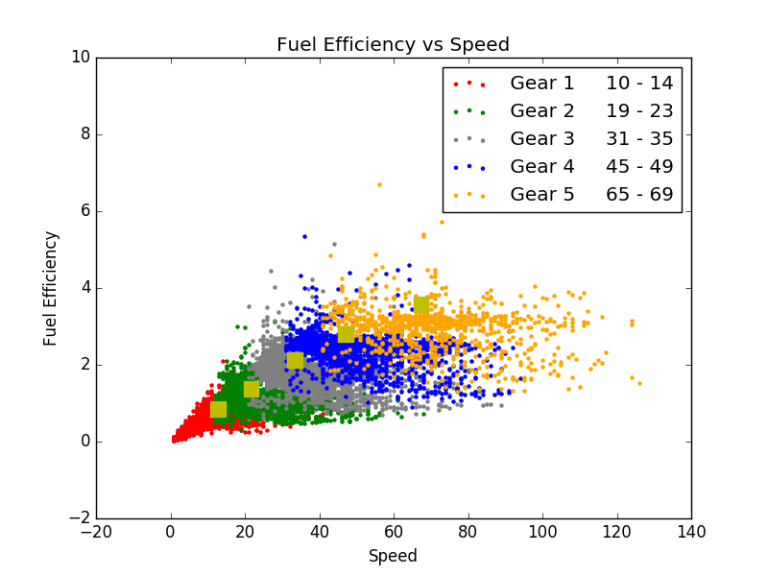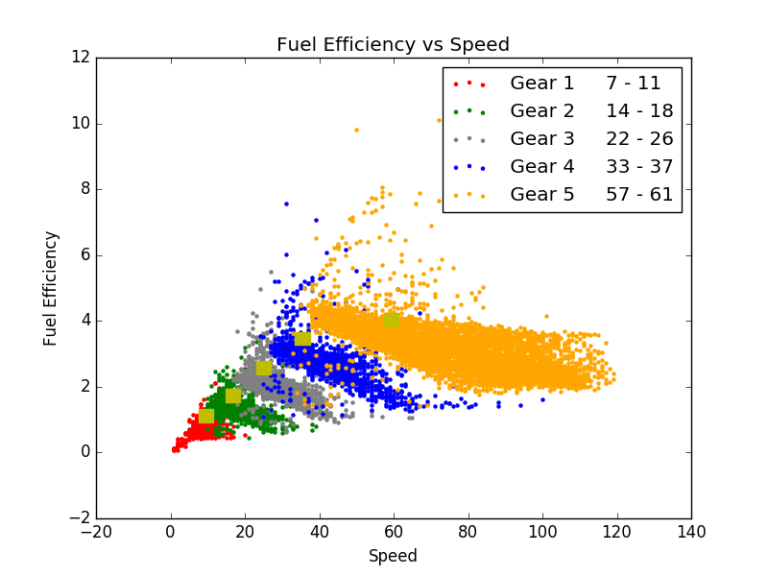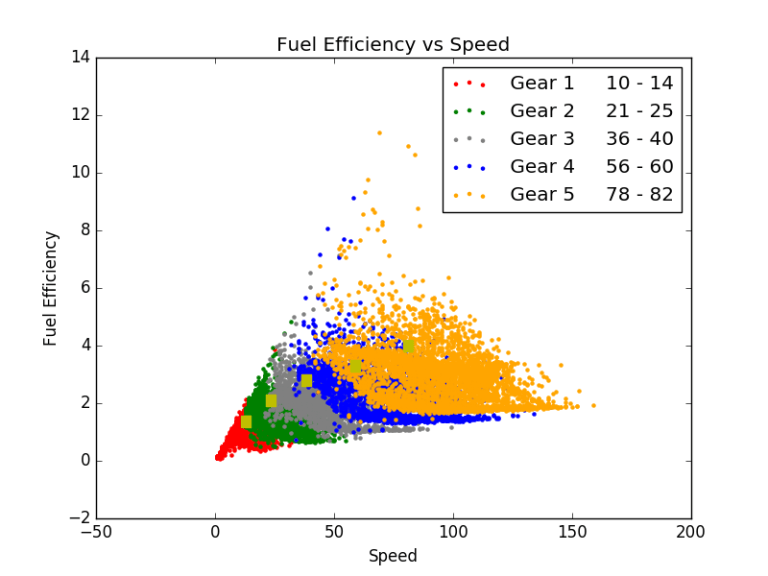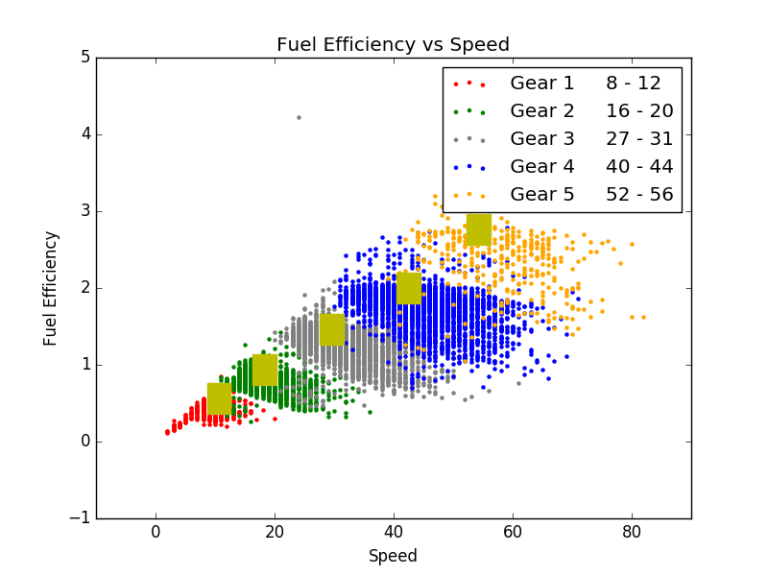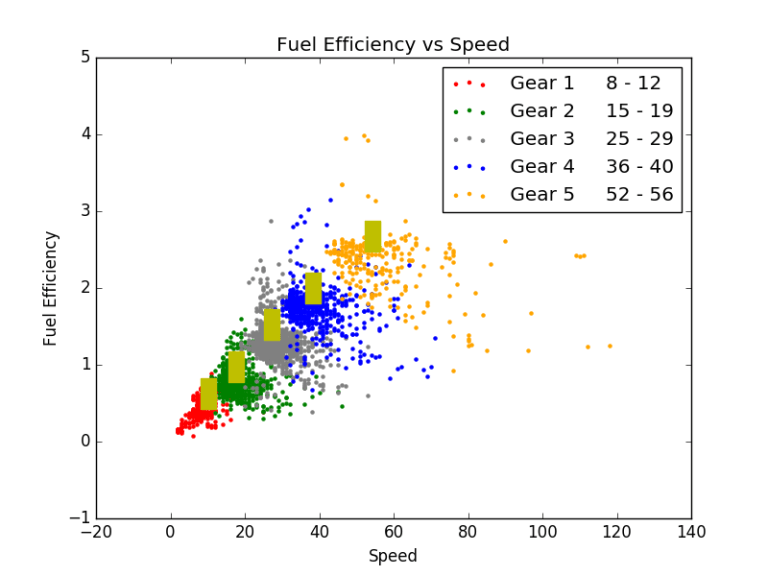This post is 2nd in the series that focuses impact of driving style on vehicles and its usage. An earlier post explored the relationship between Aggressive Driving and fuel consumption. This post will explain the importance of using the right gears and speed to maximize fuel economy.
How we did it
Again we use data from an OBD device installed in a vehicle and look at the parameters related to fuel consumption, speed and RPM (revolutions per minute). We will skip details about sensors and methodology of collecting data as it already covered in the previous blog.
The figure above has a graph of fuel efficiency and speed. From the graph above we see a few inverted U’s. Along each inverted U, the fuel efficiency first increases with speed. It then reaches a zenith and further increase of speed beyond that results in lower fuel economy. There seem to be about 5 different U’s.
Speed and Gears
Each U is corresponds to one gear. This becomes more clear if we look at a graph of RPM versus speed of the vehicle.
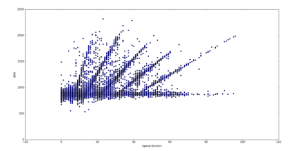
In the graph above we have the unfiltered data of RPM versus speed. Each of the spokes in the graph above belongs to a different gear. Higher gears give a higher speed for the same RPM. This in-turn translates to a higher fuel economy.
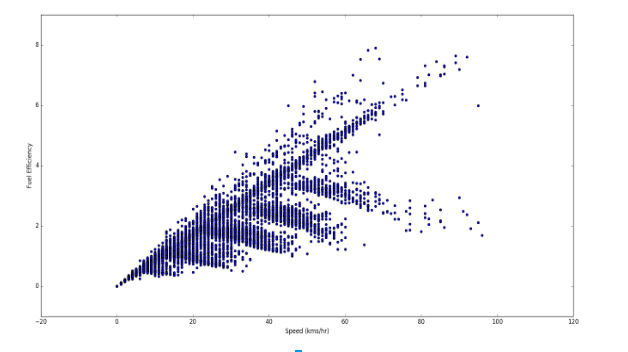
To make this more clear and pretty we do the following steps, filter data, transform, run algorithms to identify clusters – where each cluster is a gear. The result is the graph above, which shows each gear clearly identified.
We then applied this filtered and clustered information on the fuel efficiency versus speed graph to get the figure below.
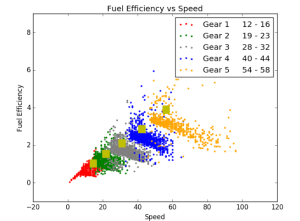
We can now clearly fuel economies at different gears and speeds
- Fuel economy improves at a higher gear. While driving at higher speeds for e.g. on highways, higher the gear better is the fuel economy
- Each gear has an optimum speed, beyond which fuel efficiency drops. This optimum speed is often called the sweet spot.
- The sweet spot for all vehicles are different. A few filtered and clustered graphs from vehicles on our platform are below.
- Fleets can train, monitor and incentivise their drivers to drive at top gears and optimum speeds to improve fuel economy and their bottom-lines
- Fleet managers could also optimise their vehicles, such that the sweet spot is in region of the most common speed.
Fuel Economy on Different vehicles
